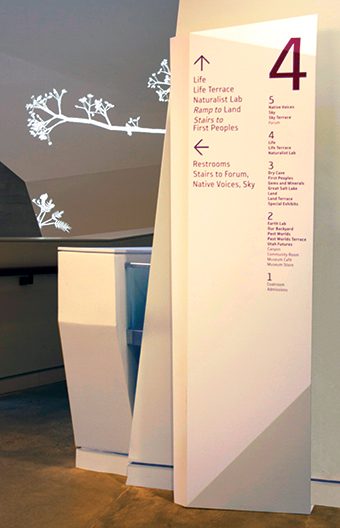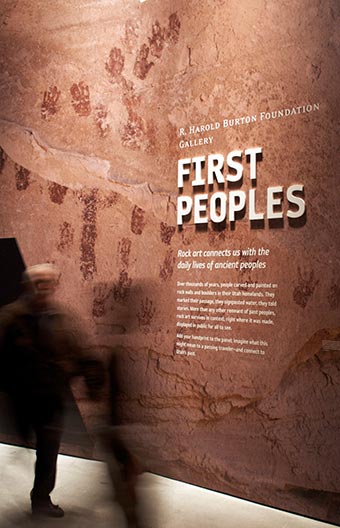

March 2012
Breathtaking Rocky Mountains are the Perfect Backdrop for the New Natural History Museum of Utah
Integrated into a 17-acre site at the foothills of the Rocky Mountains, the new Natural History Museum of Utah is a 153,000-square-foot building that merges with the surrounding hills and echoes natural forms. The building’s material palette recalls Utah’s rich geological and mineralogical history. A variegated pattern of copper panels on the building’s exterior extends at angles referencing the mountainous landscape and the geophysical processes that created it.
Opening in Fall 2011, the new Rio Tinto Center provides the 40-year old institution with a home of its own for the first time in its history. The building itself is divided into 2 wings, one with laboratories for research and collection storage, the other for interpretive exhibitions–everything from dinosaur skeletons to geological exhibits. Three structural bays organized along a central axis, reduce the perceived scale of the building and create a central, wedge-shaped public space referred to as the “canyon.” Inside, permanent exhibitions are designed as a system of trails, allowing visitors to choose their own paths. The building also provides advanced research facilities for Museum scientists and a venue for undergraduate and graduate training at the University of Utah.
The Natural History Museum of Utah selected Poulin + Morris to design a comprehensive environmental graphics, donor recognition, and wayfinding sign program for the Museum’s exterior and interior spaces including identification signs for all galleries, public spaces, cafe, museum shop, administrative offices, and meeting rooms, as well as directional/wayfinding, donor recognition, and code-required sign elements. Honoring the site’s natural surroundings, as well as the building architecture’s unique angular forms, the signs are fabricated in a wide range of regional materials used throughout the building, such as corten steel, copper, and aluminum.
The success of this program was ensured through a strong design approach, as well as adherence to strict quality standards and close coordination and collaboration with the project design architects, Ennead Architects, as well as with Natural History Museum of Utah senior staff.
This project received a LEED Gold certification from the U. S. Green Building Council.





